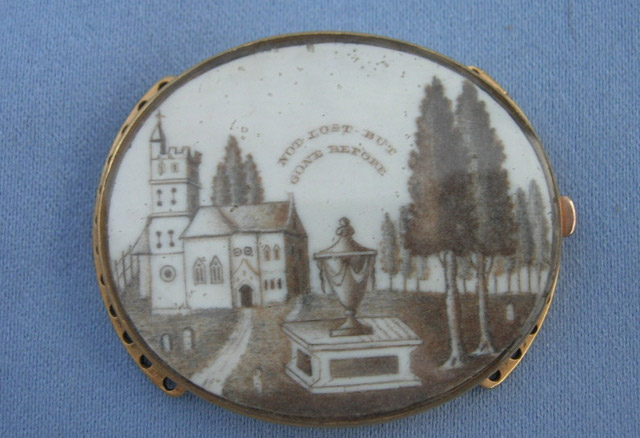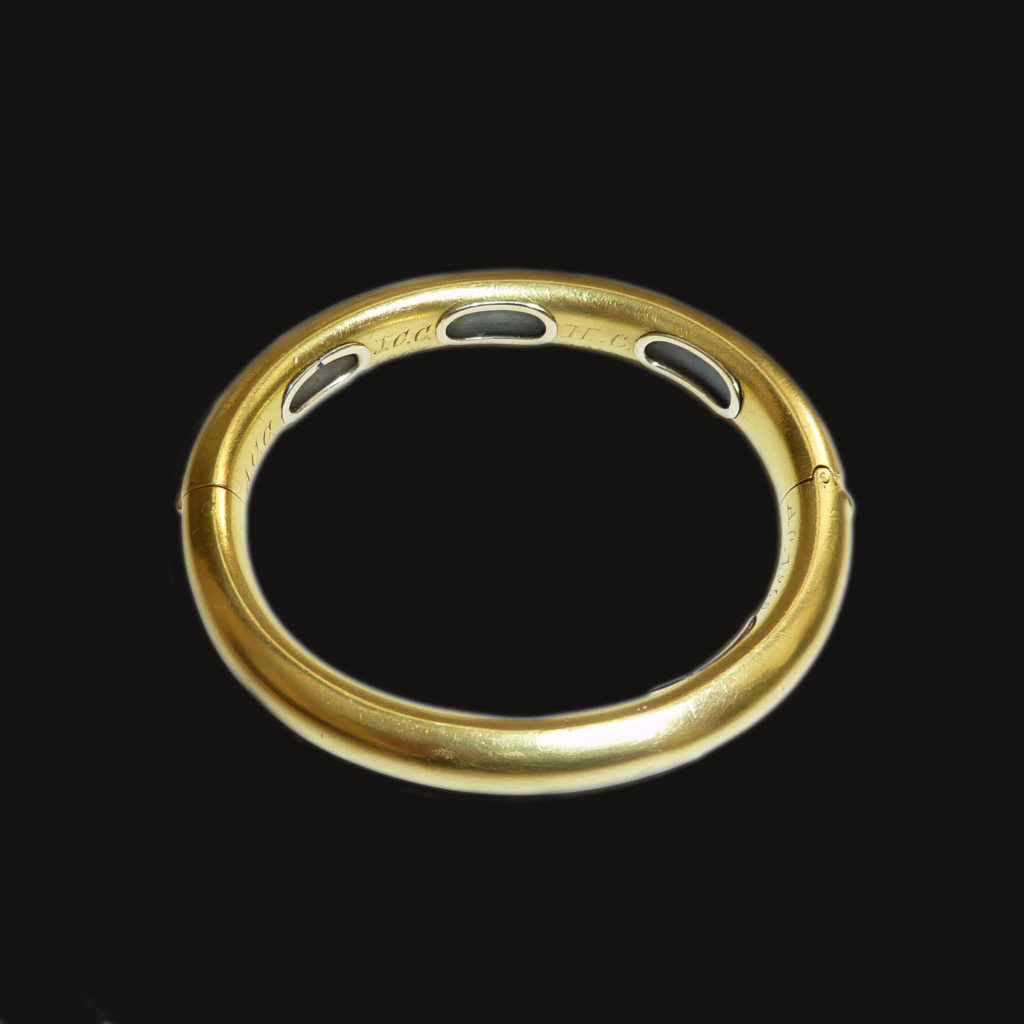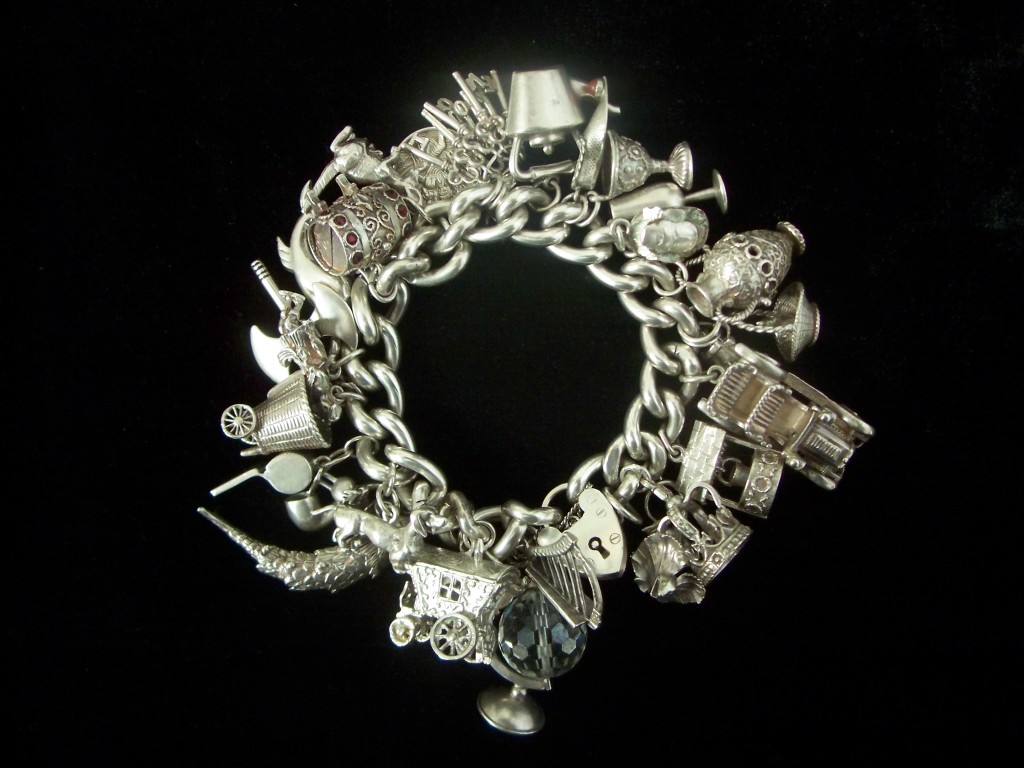Neoclassicism vs Christianity in a Bracelet Clasp from the Late 18th Century
Two of the greatest art styles to affect mourning and sentimental jewellery are neoclassicism and romanticism, looking back to classical ideals, a renewal of antique art and thinking, which permeated through to architecture and even literature.
This example holds the words ‘Not Lost But Gone Before’ and exemplifies this style, with its urn (harkening back to the Greek style and draped for mourning), though it is trapped in a contemporary setting of a church and cemetery. Painted with sepia and hair, this is a beautiful example of its form and time.
But what can we discern about the piece and its relation to the period? This piece would have been strung with pearls or hair, quite possibly the former and worn on the wrist quite prominently. Much of the neoclassical jewels are quite large in size, being the fashion of the late 18th century. Depictions of the neoclassical ideal in art were now greatly available to be worn and popular enough to generate their own industry. Much the same as the post Restoration period had spurred on a great industry of mourning culture to a mobile society, neoclassical art was popular enough to cover everything from formal/traditional art, architecture, fashion and of course, jewellery. It was only natural that jewellers and the mourning industry would adapt to this new popularity.
So much was the culture of mass production facilitating the need for these jewels, that travelling miniaturists would carry pre-painted ivories from town to town in order to sell and do customisations to a piece, in order to personalise it. This was also at the cusp of the burgeoning hairwork industry of the late 18th century. Sentimental jewels were now not only becoming part of the mainstream, but there was enough variation to facilitate different levels of class, as opposed to the industry in discovery 100 years previous.
How can this be seen in pieces today? This piece has a high level of personalisation in the depiction of the church and the urn. Firstly, it shows the obvious Christian symbolism mixed in with the neoclassical symbolism, which is not as common as one may think. Neoclassicism ushered in an enlightened period of person first, church second, hence while there is still religious symbolism, much of the time it’s alluded to, rather than overtly stated. Here, we have the church standing proudly in the distance, even the cypress pointing to the heavens gives the church validity in the nature of final judgement/heavenly passage. Then there is the urn and the plinth, with the obvious harkening back to the neoclassical and contemporary mainstream symbolism for death.
As well as all this, the setting is in a church-yard cemetery with the headstones strewn across the ground. Firstly, the scale is completely amiss with the piece, it’s been created with fine detail (note the shading to the urn, roof of the church and the grass), but obviously the headstones are small and the urn would dwarf the church and much of its surroundings. In a sense, yes, the focus of the piece is directly on the urn itself, which is where it needs to be, but even by looking at the fence next to the church, we see that the perspective is even further off.
So, as a collector, what are we to think? I would suggest this piece moves into higher quality. It’s not the fine art of what you would expect by a full colour French piece, but it shows fine detail, a unique depiction and an immediacy in the painting that is truly unique. One could make much more personal observations of the person who commissioned this just by the symbolism, however, you can read between the lines of this little discussion for my thoughts and anything direct would simply be supposition.







